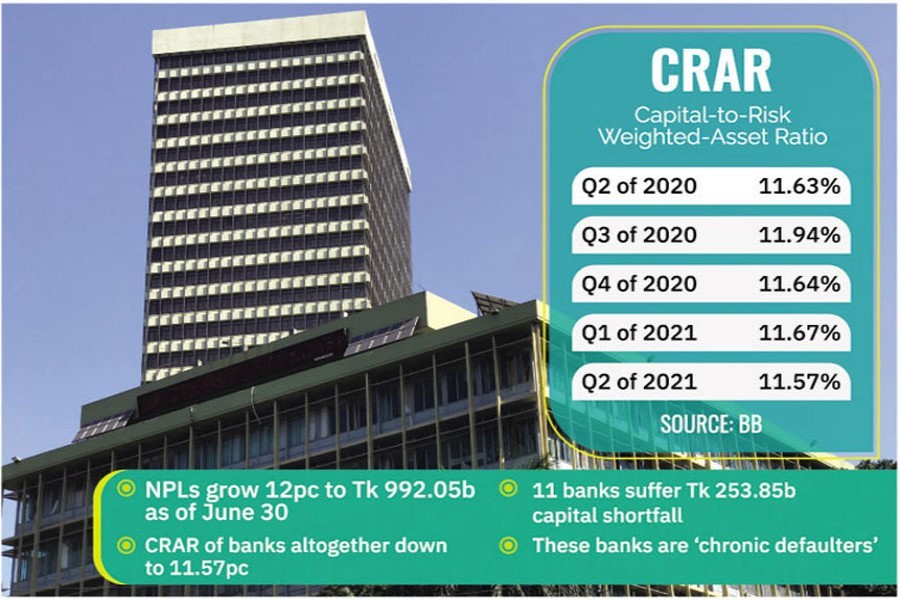Banks' capital base somewhat weakened in the first half of the current calendar year mainly under the weight of rising non-performing loans (NPLs), officials said.
Strengths of the banking industry, thus, got a bit sapped as much of their money used for provisioning the funds lying with the borrowers beyond repayment timeline.
The capital-to-risk weighted-asset ratio (CRAR) of all the scheduled banks came down to 11.57 per cent as on June 30 from 11.64 per cent six months before, according to the latest statistics available with Bangladesh Bank (BB).
The CRAR was 11.67 per cent as on March 31, 2021.
"Increase in NPLs has retarded the growth of capital base in the country's banking sector during the period under review," a BB senior official told the FE Thursday while explaining the latest situation on CRAR in the banking system.
The banks had to keep aside more money from their capital for maintaining provisioning requirements against their classified loans, he added.
"Cash dividend has also affected the ability to increase in capital base in the banking sector," the central banker noted.
Meanwhile, the amount of NPLs grew nearly 12 per cent or Tk 104.71 billion to Tk 992.05 billion as on June 30 from Tk 887.34 billion six months before, despite receiving policy supports from the central bank.
However, the total regulatory capital increased by nearly 5.0 per cent or Tk 62.74 billion to Tk 1381.08 billion as on June 30 from Tk 1328.34 billion six months ago. It was Tk 1354.07 billion as on March 31 this calendar year.
On the other hand, 11 banks out of the total 60 suffered a total capital shortfall worth Tk 253.85 billion as on June 30 this calendar year.
The 11 banks-five state-owned commercial banks (SoCBs), four private commercial banks (PCBs) and two specialised banks (SBs) -were put on the list of capital shortage, according to the BB officials.
"These banks have failed to generate enough profits to improve their capital base mainly due to the poor quality of their assets," another central banker said explaining the capital shortages of the banks.
He also said most of these banks are "chronic defaulters" regarding maintaining their CRARs.
The CRAR of 42 PCBs was found, on average, 13.26 per cent as on June 30 last while the CRAR of nine foreign commercial banks stood at 28.46 per cent.
However, the capital position of public banks is still a matter of concern, the BB official added.
The CRAR of six SoCBs stood at 6.82 per cent during the period under review while the CRAR of two SBs was in the negative territory at 32.16 per cent, the BB data showed.
In 2020, ten banks out of the total 59 suffered a total capital shortfall worth Tk 289.50 billion as on December 31 despite a falling trend in default loans.
The 10 banks -- five SoCBs, three PCBs and two SBs -- were put on the list of capital shortfall.
"The banks may improve their capital bases through increasing profitability," Syed Mahbubur Rahman, former chairman of the Association of Bankers, Bangladesh (ABB), told the FE while replying a query.
Mr Rahman, also managing director (MD) and chief executive officer (CEO) of Mutual Trust Bank Limited, said the banks might enhance their capital base through improving their asset quality.


